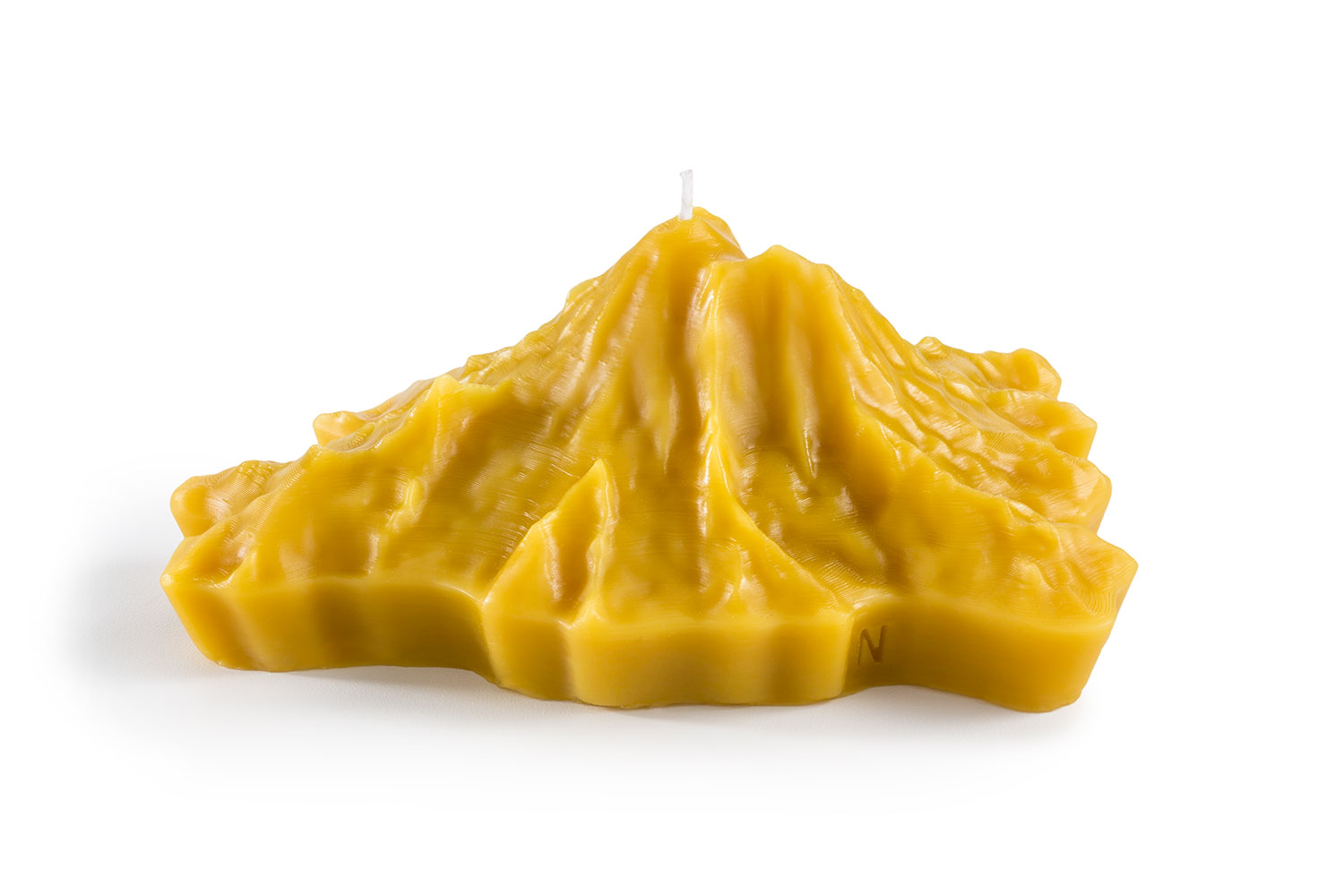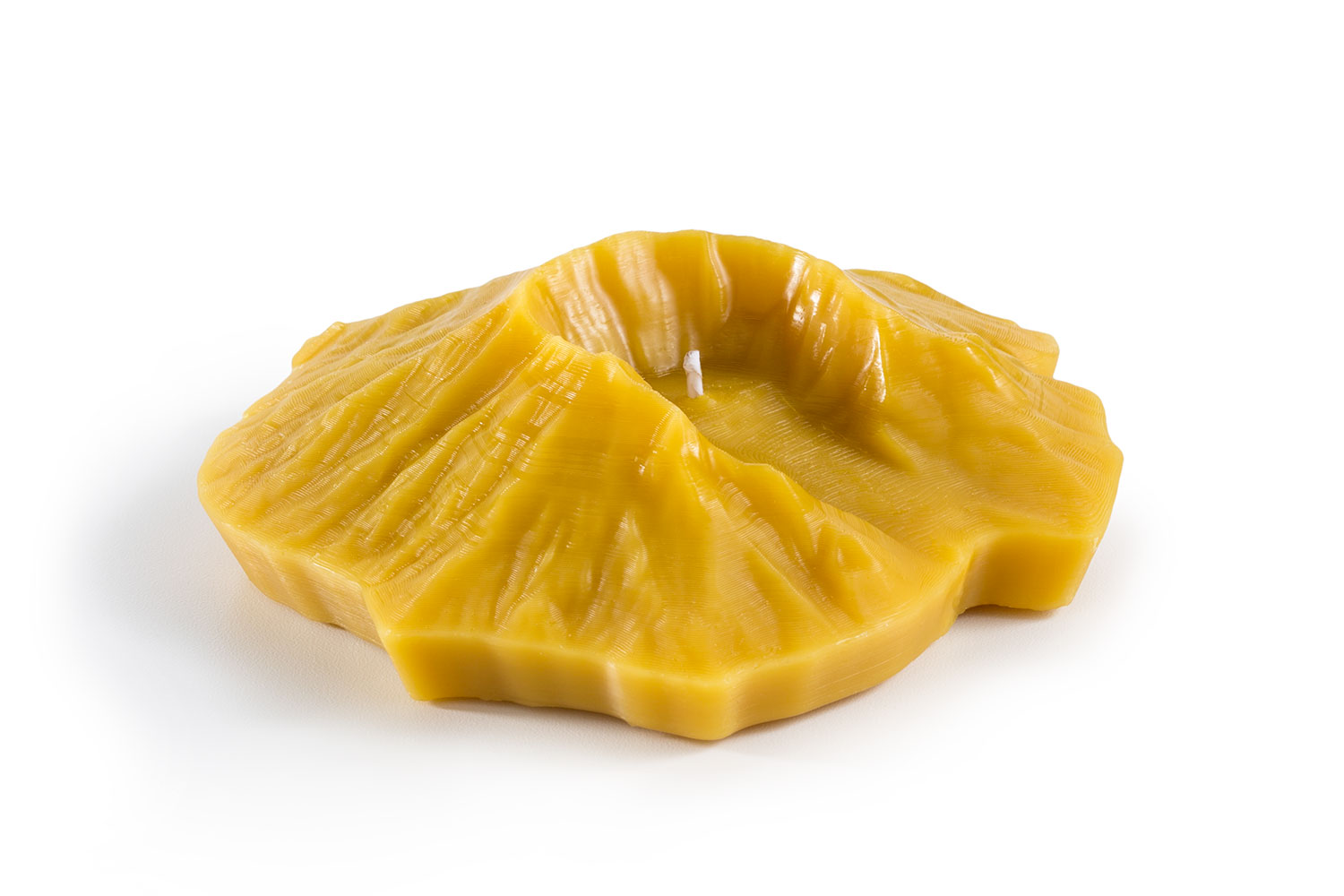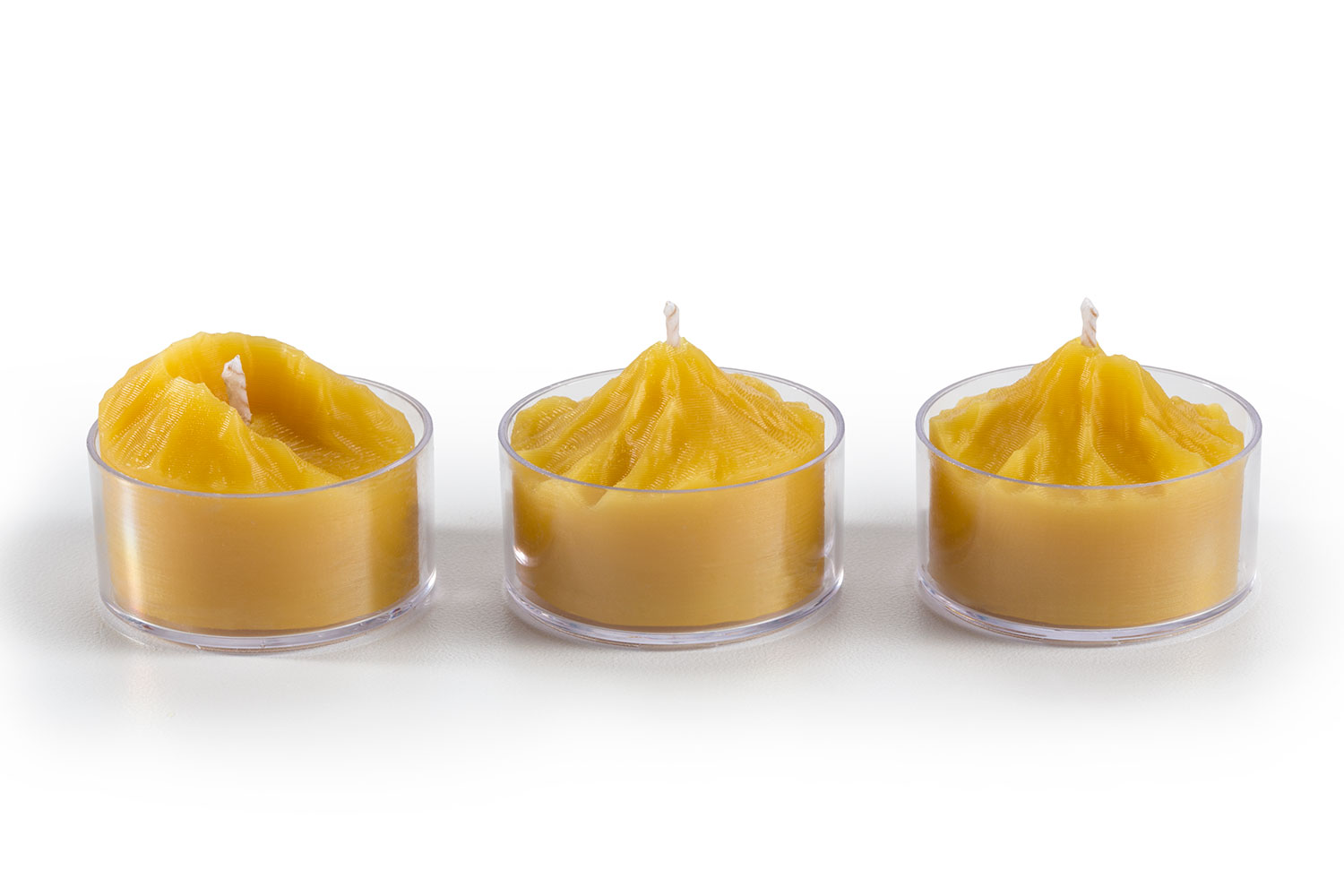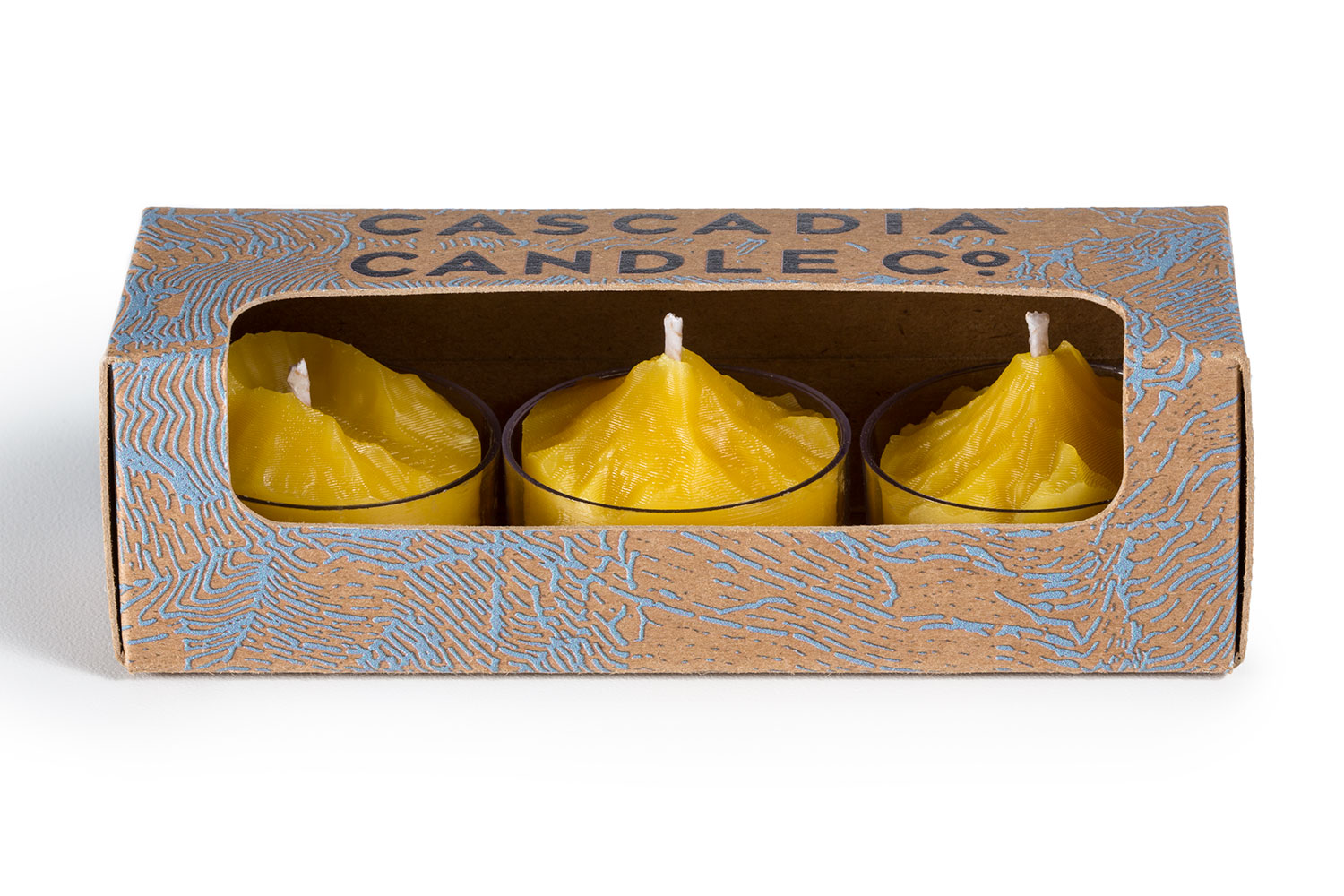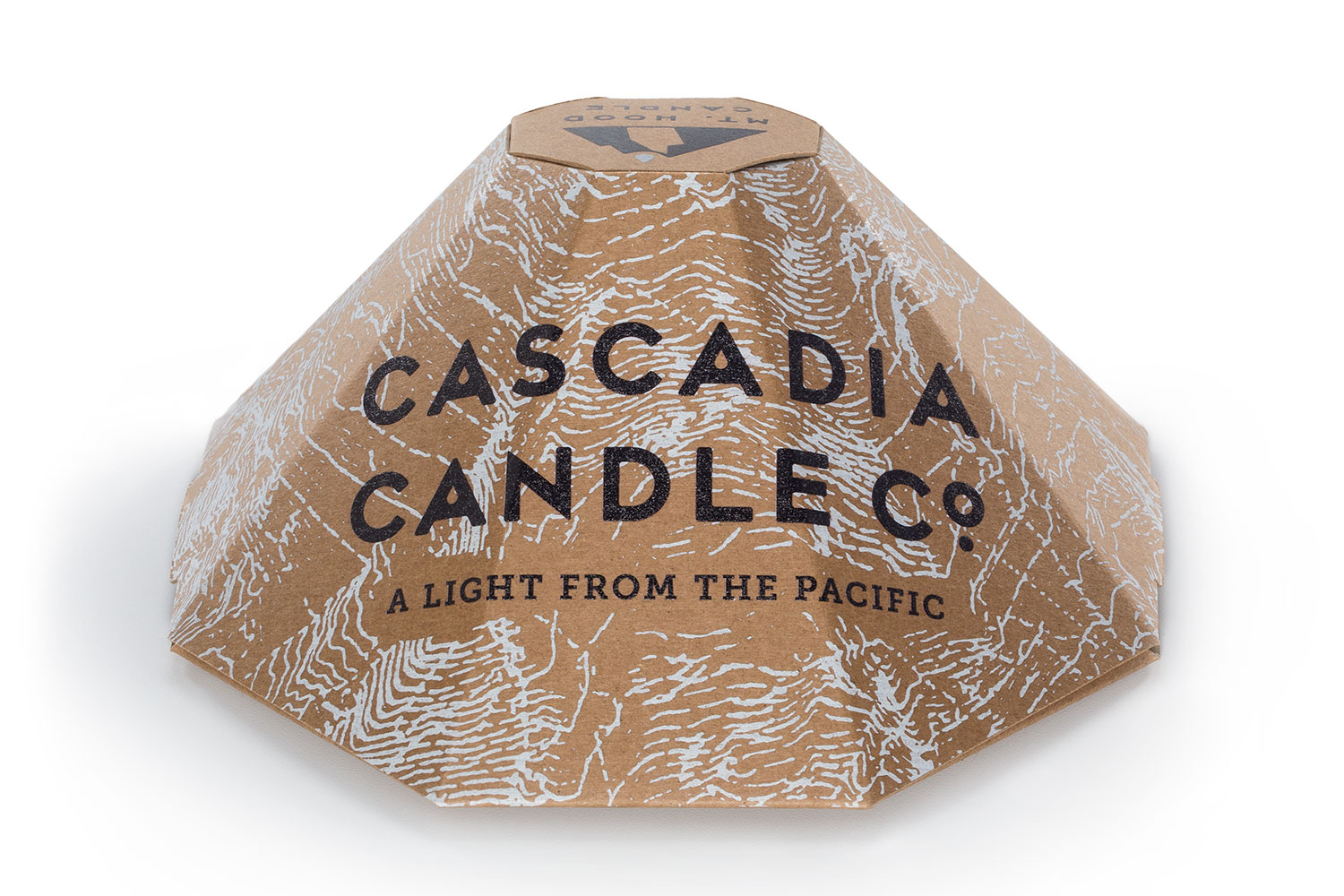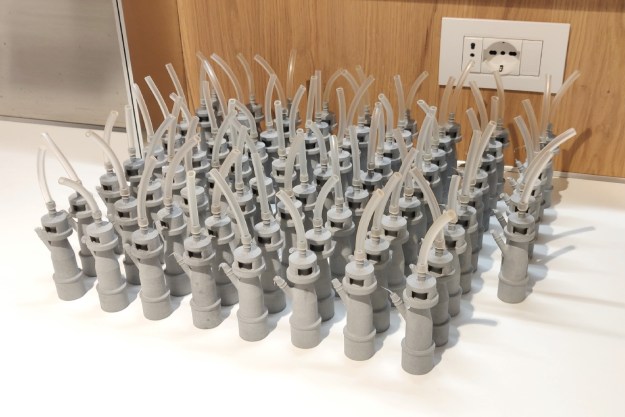Not many candles can claim to be made with geospatial surveying aircraft, 3D printers, and and high-definition laser radar — but Brad Swift doesn’t make your average pile of wax. His company, Cascadia Candle Co, is poised to take Kickstarter by storm this week with what’s undoubtedly the most high-tech line of candles ever made: 3D topographical beeswax candles made from lidar scans of real northwestern mountains. They’re essentially perfect wax miniatures of various full-size behemoths in the Cascade range. After seeing them in person and marveling at the level of detail, we had to get the skinny on his design process, so we sat down with him one afternoon for an interview.
Like any good candle story, this one starts with beeswax.
“I started thinking about a Portland-themed candle and what that might be. I thought, well, it could be a raindrop, or it could be a tall boy beer can…”
For the past four years, Swift has been running a small company called Portland Bee Balm, and as such, he generally keeps a lot of wax around.
“I am surrounded by towers of beeswax in my office,” he told us, “so for the longest time, candles were just staring me in the face as a possible next project. We already had the materials and melting tanks and other equipment. It was just always something there in the back of my mind, but I didn’t want to do something that somebody else was already doing really well. There’s a lot of great beeswax companies making great pillar candles, and I didn’t just want to come in and try to compete with them. There wasn’t really anything special that I felt I had to offer in that space.”
So he started brainstorming.
“I started thinking about a Portland-themed candle and what that might be. I thought, well, it could be a raindrop, or it could be a tall boy beer can — you know, something really Portlandy. I started going through all these ideas, and then at one point thought about doing Mt. Tabor — the dormant volcano that’s sitting in the middle of the city.”
But Tabor looks more like a mound than a mountain, and he realized no one would recognize its profile. “I thought, if I’m going to make a mountain, I should definitely do Hood,” Swift says. “But how would I do that?”
This is where the story takes a technological turn. Realizing that crafting a recognizable Mt. Hood candle would require more technology than he knew how to harness, Swift turned to his network of friends for help.
“I started talking to my buddy who works in geospatial tech here in town. They do models for utility companies of all types of terrain and I asked him if he could get me the topographical data for Mt. Hood. He told me ‘Yeah, no problem, I do this stuff every day,’ and a couple days later, he got back to me with this amazing dataset of lidar data that’s down to like three-foot resolution. It was crazy; you could see incredible amounts of detail — every canyon, glacier, and moraine was there.”
As luck would have it, Oregon happens to be one of the few states in the US that maintains high-resolution laser radar scans of its landscape, and as Swift eventually discovered, the state also makes all that data publicly available through an organization called the Oregon Lidar Consortium.
“There are unlimited possibilities here, and my mind is just overflowing with new ideas.”
“So I was able to get that dataset, but it wasn’t very useful in that raw form. I had to figure out how to take all that data and make it into a 3D model that I could use to make a mold for the candle. So I ended up getting in touch with another friend of mine who works in Seattle doing 3D modeling and design work, and I had him take that dataset and form a 3D digital model of the mountain.”
Then he hit a roadblock. Swift had the design files in hand, but he was having some trouble making his digital mountain into a physical model. At that time, 3D printing was still totally new territory for him, and after dozens of failed attempts at printing on a rickety old Makerbot at a local makerspace, he started looking for help — which, oddly enough, eventually led him to Digital Trends’ headquarters.
I actually met Swift’s 3D Mount Hood model before I met him. One day a colleague of mine asked if I could make something on one of the 3D printers I was reviewing, and emailed me a miniature Mount Hood in .STL format. I happily obliged, and when Swift came in the next day to pick up the completed print, he could hardly wipe the grin off his face. He finally had the model he had been trying to make for months.
From there, he was off to the races. 3D printed Mount Hood in hand, Swift rushed back to his office to make a silicon cast, which he would later fill with molten beeswax to create his first candle: a stunningly true-to-life wax miniature of Oregon’s most famous mountain. It wasn’t quite what he was expecting, though.
“I was worried that I’d lose some of that detail, but it turns out there’s this beautiful and unintentional melding of technology and design, because the 3D printer puts these layers in that look exactly like the topographical layers on a topo map. So the digital model actually has smooth sides, but in the 3D printer it’s necessarily layered out. As a result of the printing process, we end up with these hundreds of layers, each one 0.2 millimeters high. When we cast those objects, the silicone picks up that detail, and then the wax picks up that detail, so you end up with a model that looks like a three dimensional topographical map, which I just love.”
But of course, Swift wasn’t satisfied with just one kind of candle. Once he had the whole modeling/printing/casting process figured out, he realized that he could easily repeat it with other mountains. In just a few short weeks, he was fitting wicks into high-resolution wax miniatures of Mount Rainier and Mount Saint Helens, which, in addition to Hood, are the first three candles that Cascadia Candle Co. is launching on Kickstarter.
And he’s not stopping there either. Assuming everything goes swimmingly with the Kickstarter campaign, Swift plans on expanding his product lineup and candle-izing even more geographical objects — and not just ones from Oregon and Washington either.
“There are unlimited possibilities here, and my mind is just overflowing with new ideas. I just want to keep making new things. People aren’t putting a lot of research and development and design into candles. Candles are candles, ya know? They’re not complicated. That’s why I feel like this is special and why I’m so excited, because I was able to put so much design energy into something that doesn’t usually get that kind of attention.”
Editors' Recommendations
- The AnkerMake M5 3D printer brings higher print speeds
- Super Mario 3D World made it to Switch, but other Wii U games are still stranded
- Inside the quest to 3D print a perfectly palatable steak
- It’s time to enlist your 3D printer in the fight against coronavirus
- 3D printing lets hospitals make ventilator substitutes with common equipment



